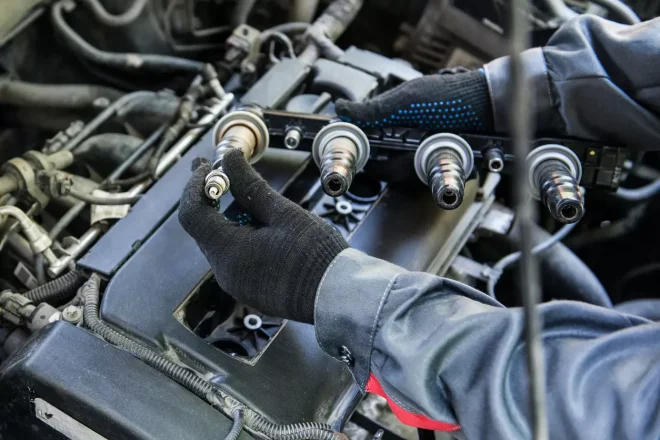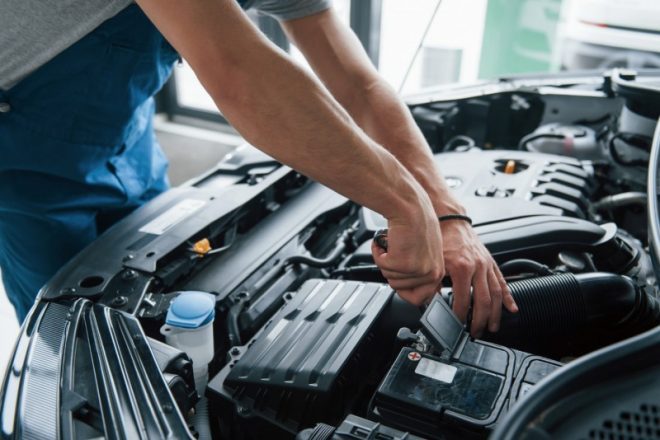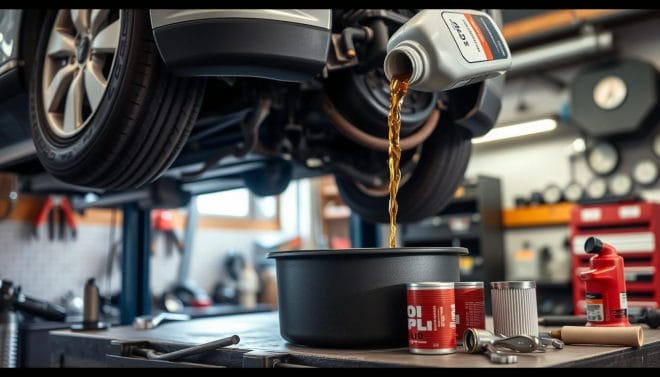Spark plugs may be small, but they play a big role in keeping your engine running smoothly. Over time, they wear out, which can affect performance, fuel economy, and even your car’s ability to start. Knowing the warning signs early can save you from costly repairs.
Key Takeaways
Spark plugs should generally be replaced every 30,000 to 50,000 km, depending on the vehicle and type of plug.
Regular maintenance ensures smoother performance, better fuel economy, and longer engine life.
Ignoring spark plug issues can lead to bigger and more expensive engine problems.
1. Difficulty Starting the Engine
If your car struggles to start, weak or worn spark plugs could be the cause. They may not provide the strong spark needed to ignite the fuel mixture.
2. Poor Fuel Economy
Bad spark plugs can cause incomplete combustion, making your engine burn more fuel than necessary. If you’re filling up more often than usual, it might be time for a check.
3. Engine Misfires
- A misfire feels like a sudden hesitation or jerk when driving. It happens when spark plugs fail to ignite the fuel properly in one or more cylinders.
4. Rough Idling
If your car shakes or vibrates while idling, faulty spark plugs may be the culprit. A smooth idle depends on all cylinders firing correctly.
5. Lack of Acceleration Power
If your car shakes or vibrates while idling, faulty spark plugs may be the culprit. A smooth idle depends on all cylinders firing correctly.
6. Engine Warning Light
Modern cars will often trigger the “Check Engine” light if spark plugs misfire or fail repeatedly.
Cost of Replacing Spark Plugs
The cost varies depending on the type of spark plugs, your car model, and whether you choose DIY or a workshop service.
Standard Copper Spark Plugs: $5 – $10 per plug
Platinum / Iridium Spark Plugs: $15 – $30 per plug (longer lifespan & better performance)
Labor Cost in Workshops (U.S./UAE equivalent): $40 – $110, depending on engine size and accessibility
DIY Option:
If you replace them yourself, you only pay for the spark plugs (usually 4–8 needed).
Example: 4 platinum plugs = $60 – $120 total.
Cost Comparison (Approx.)
| Option | Copper Plugs | Platinum/Iridium Plugs | Labor/Service | Total Cost |
|---|---|---|---|---|
| DIY (4 plugs) | $20 – $40 | $60 – $120 | $0 | $20 – $120 |
| Workshop (4 plugs) | $20 – $40 | $60 – $120 | $40 – $110 | $60 – $230 |
How to Replace Spark Plugs: A Step-by-Step Guide
Replacing spark plugs is one of the most effective ways to maintain your vehicle’s performance without spending a fortune at the mechanic. With the right tools and a little patience, you can do it yourself at home.
Tools You’ll Need
Ratchet with spark plug socket
Spark plug gap tool
Torque wrench
Extension bar (if needed)
Anti-seize compound (optional, some plugs already come coated)
Clean rag and gloves
Step 1: Prepare Your Vehicle
Park the car on a flat surface and let the engine cool down completely.
Disconnect the negative battery terminal to avoid electrical accidents.
Step 2: Locate the Spark Plugs
Open the hood and identify the spark plug wires or ignition coil packs.
Most cars have 4, 6, or 8 spark plugs, depending on the engine size.
Step 3: Remove Ignition Coils or Wires
Carefully disconnect the ignition coil or spark plug wire.
Avoid pulling on the wire directly — use the boot to prevent damage.
Step 4: Remove the Old Spark Plug
Insert the spark plug socket and extension bar.
Turn counterclockwise until the plug is loose, then remove it.
Check the old plug for signs of wear, oil deposits, or burning.
Step 5: Check and Adjust the Gap
Use a spark plug gap tool to measure the gap between electrodes.
Adjust according to your vehicle’s manual if needed.
Step 6: Install the New Spark Plug
Thread the new spark plug in by hand to avoid cross-threading.
Use a torque wrench to tighten to the manufacturer’s specifications.
Apply anti-seize compound only if recommended.
Step 7: Reconnect Wires or Coils
Attach the ignition coil or spark plug wire securely.
Repeat the process for each spark plug.
Step 8: Test Your Vehicle
Reconnect the battery terminal.
Start the engine — it should run smoother with improved acceleration and efficiency.
Safety Tips
Always work on a cool engine to avoid burns.
Replace all spark plugs at the same time for balanced performance.
Use OEM or recommended spark plugs for your car model.
Key Benefits of Replacing Spark Plugs
✅ Better fuel efficiency
✅ Smoother acceleration
✅ Lower emissions
✅ Prolonged engine life





